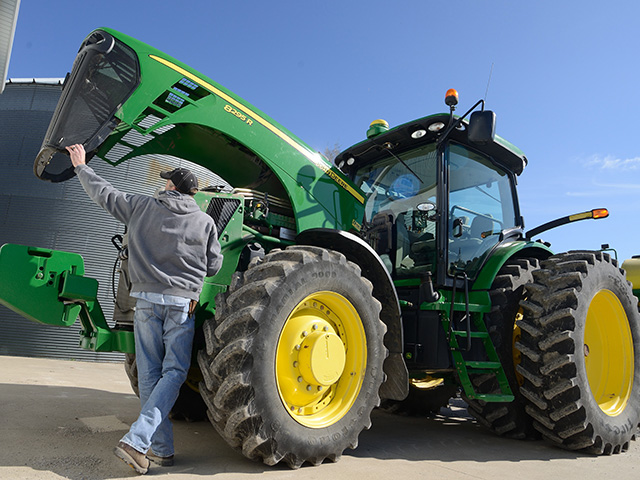5 Options to Weather the Parts Shortage
How to Get Through Short Supply of Parts During Busy Time
STEAMBOAT SPRINGS, Colo. (DTN) -- Breakdowns are always a headache, but during harvest, there's little worse than being sidelined. This year, a simple run to the nearest dealership and a sweaty afternoon with a wrench may not be enough to get a machine back in the field.
International supply shortages have ground the supply chain to a halt in many different industries and different sectors of the agriculture manufacturing world. Planter part suppliers set sales records in the spring as demand roared and inventory began to shrink. Then, in the summer, the crisis was so acute manufacturers slashed production and bumped prices to compensate for the dramatic cost increases they encountered on what they could obtain.
So, what do you do this fall? A few working in the industry offered some ideas.
BE PREPARED
There are parts that break once a decade and those that need replacing every few years. For those "every few years" pieces, this is the time to keep a few handy.
"Go through your equipment ahead of time," said Phil Needham, owner of Needham Ag Technologies in Calhoun, Kentucky. "See what's needed and buy the part, even if you're not going to use it for a month or two or three."
Belts, bearings and anything else that sees wear and tear and regular replacement are ideal to stock up on if the opportunity presents itself.
"We do have some of those parts, and we don't have others," he said.
CHECK HIGH AND LOW
eBay: It's not just for overpriced PlayStations the week before Christmas. There are parts available on the online marketplace, and buying them there is just one example of the lengths farmers have gone for help this summer. In the brick-and-mortar world, suppliers report helping customers who've driven as many as eight hours one way to pick up a desperately needed piece. Some are even settling for parts that aren't exactly what they need.
P[L1] D[0x0] M[300x250] OOP[F] ADUNIT[] T[]
"We also have people buying parts that are close and trying to modify those," explained John Dyke, CEO of All States Ag Parts. "Sometimes it works and sometimes it doesn't."
The "check high and low" mantra is something that's been helping at All States, which operates 16 locations in nine states and three Canadian provinces, most of which have an attached salvage yard. They deal in new aftermarket parts, as well, and try to keep those in stock by leaning on an international supply chain.
"We buy some domestically. We buy some from China, from India, from Turkey. All three of those countries have had problems at one time or another, but we're lucky to have multiple suppliers for all our parts, so if we're having sourcing problems in Turkey, we pivot to India, China or Taiwan."
CONSIDER USED
Used parts have been especially hot this year, up as much as 15%, Dyke said.
That's not as easy as it always has been, of course, as the dearth of new equipment has jacked up the price of the used equipment Dyke's company often scavenges. Equipment that a year ago may have been sold to All States for parts might now be pressed into another year of service.
But Dyke said his company has found enough to help desperate farmers out.
His company sells used everything, from belts to tires. The tires, in fact, have been a particularly hot commodity, and an example of corners farmers have had to cut.
"Tire revenue is up 15% to 20% over what we'd have expected," Dyke said. "People are buying certain sizes of tires, and some are so marginal we'd usually put them in recycling, but they need something that holds air to put on a set of duals, so they take it."
PLAN AHEAD -- EVEN FOR SPRING
Supply problems have defined 2021 for Needham in Kentucky.
"We have some bolts that have been on order since January," he said. "They're still not here, and they won't be able to finish production until later this year. You get every excuse imaginable."
Typically, there's a lead time on a parts order of two to four weeks, he explained. Not so this year.
"Historically, a long lead time would be 10 or 12 weeks," he said. "Now, there's a lot of eight-, nine-, 10-, even 12-month lead times."
That could bring the crisis full circle, back to where it first started in planting. Unfortunately, that means waiting until even January or February to make any wholesale planter changes, upgrades or fixes and could be too late.
PRAY FOR GOOD WEATHER
Suppliers have said one saving grace for the planting season was it went so smoothly with few weather delays.
"We sell more used parts when it's wet," Dyke said.
Drought in different parts of the country may have helped keep this season's difficult parts situation from boiling over.
"In a lot of the country, it will be a quick harvest, a light crop and dry conditions, and usually that decreases part demand," Dyke said.
Joel Reichenberger can be reached at Joel.Reichenberger@dtn.com
Follow him on Twitter @JReichePF
(c) Copyright 2021 DTN, LLC. All rights reserved.



